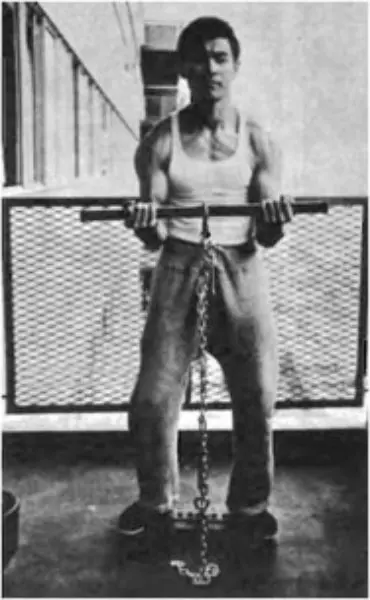Whatever your training goal is, you must use the right exercises and training methods if you want to make the fastest possible progress. Your body adapts very specifically to the type of training you do, so if you want a particular result from your workouts, you need to train in a particular way.
For example, if you want to get stronger, you need to lift progressively heavier weights. If you’re going to get better at long-distance running, you need to run long distances in training.
Makes sense, right?
But there is more to effective training than choosing the right weights or workouts. You also need to use the most appropriate exercises.
Exercises are usually described as compound or isolation. Compound exercises involve several muscles and joints working together, while isolation exercises involve just one joint and fewer muscles. Both types of training deserve a place in your workouts, and they both have benefits, advantages, and drawbacks.
However, strength training exercises can also be described as isotonic or isometric and even isokinetic. These labels also deserve your attention when deciding which exercises to put in your workouts.
Level Up Your Fitness: Join our 💪 strong community in Fitness Volt Newsletter. Get daily inspiration, expert-backed workouts, nutrition tips, the latest in strength sports, and the support you need to reach your goals. Subscribe for free!
What are isotonic exercises?
Isotonic exercises are what most people think of when it comes to working out – either using machines, free weights, or bodyweight exercises. The word “isotonic” has its roots in the Greek language – “iso” means equal, and “tonus” means tone or tension.
Isotonic exercises involve moving through a range of motion that combines two equal phases of movement. In other words, you both lift and lower the weight you are using. As with all things related to exercise, lifting and lowering can also be described in more scientific terminology:
- Concentric
- Eccentric
Lifting a weight involves a concentric muscle contraction. This means the muscle shortens to generate force. For example, the lifting part of a dumbbell curl is a concentric muscle action of the biceps, as is straightening your knees in leg extensions.
Lowering a weight involves an eccentric contraction. This means the muscle generates force as it lengthens. Lowering the bar to your chest during bench presses or descending into a squat are both examples of eccentric muscle actions.
Most exercises involve both an eccentric followed by a concentric action or vice versa. I say most because there are a few exceptions. For example, an overhead medicine ball throw, where the ball is released, is concentric only. The Olympic lifts also feature a much smaller eccentric component, especially if you drop instead of lower the weights. However, these exceptions are few and far between.

The benefits of isotonic training
Isotonic exercises are useful for building muscle strength, strength, endurance, and power. Because they usually involve taking your joints and muscles through a wide range of motion, they can also preserve or even improve joint mobility and muscle flexibility. Performed as a circuit, isotonic exercises could also help improve your cardiovascular fitness and burn calories for fat loss. Finally, isotonic exercises can help strengthen your bones.
While most of the exercises in your workout will be isotonic, some will fall into a second, different category – isometric.
What are isometric exercises?
The term isometric, like isotonic, has its roots in Greek. “Iso” still means equal, but “metros” means measure or length. In gym terms, we often call isometrics static contractions.
With isometrics, your muscles generate force, but they do not change length. This means either pulling or pushing against an immovable object or generating less force that is required to produce movement. For example, trying to lift 1000 lbs. or holding a plank.
Most isotonic exercises involve very brief isometric pauses too. This happens when you turn an eccentric contraction into a concentric contraction. For example, when doing squats, you lower the weight, pause for a second, and then stand back up again. Pauses between reps are isometric.
These isometric pauses can be extended to make your chosen exercises harder. For example, pause squats and pause bench presses, where you hold the weight stationary mid-rep, are used by powerlifters to increase strength and power. Bodybuilders use pauses to increase time under tension for increased muscle growth. For example, holding your knees straight for 1-2 seconds during reps of leg extensions. This is called the peak contraction method.
However, some exercises are entirely isometric. Examples include planks, side planks, L-sits, wall squats, and any other exercise that involves muscle tension without joint movement.
The benefits of isometric training
Isometric exercises have the same benefits as isotonic exercises and can help build strength, power, endurance, and, to a lesser degree, muscle size. They can also strengthen your bones. However, because there is no movement, isometric exercises won’t do much for joint mobility or flexibility.
That said, because they involve no movement, isometric exercises can be easier on your joints than some isotonic exercises. Because of this, isometric exercises are often included in injury rehab programs. For example, after a knee joint injury or operation, isometric training allows you to strengthen your muscles without moving your joints.
Exercisers can also use isometrics to help eliminate sticking points, having a knock-on effect to isotonic exercise performance.
For example, if you find that your deadlift always gets stuck at just below knee-height, you can set up a heavily loaded bar at that height and do sets of isometric contractions to improve your performance at that specific joint angle. In time, you should find that you pass through this sticking point with less difficulty.
However, it’s important to note that increases in strength are specific to the angle at which you train your muscles. If you hold your joint at 90-degrees, that’s where you will experience the majority of your strength increases.
If you want to develop full-range strength, you’ll need to do several isometric contractions and different joint angles. If you want full-range strength, isotonic exercises are more effective and time-efficient.
It’s also worth noting that many isometric exercises can be done without equipment. You can push or pull against an immovable object, such as a wall, table, handrail, or even use an opposing limb. Bruce Lee, the famous martial artist, created an isometric training device that allowed him to train virtually every muscle in his body at almost any angle. Such a device is easy to make.
What about isokinetic training?
Most of the exercises you’ll do in the gym will be either isotonic or isometric. However, there is a third type of “iso” training – isokinetic.
Isokinetic (meaning equal speed or energy) exercises involve specialized machines that keep your muscle moving at a constant speed and under continuous tension. They usually involve a concentric and an eccentric contraction with no mid-rep isometric pauses. Isokinetic exercises are used in medical and science facilities and feature electromagnetic resistance and a computer to keep the load and movement speed constant.
While some gyms have isokinetic machines, they are very rare as they are extremely expensive. You are much more likely to find isokinetic machines in a university sports science department or a hospital than a gym.
Summary – isotonic vs. isometric vs. isokinetic training
Are all these different isos getting confusing? Here’s a quick summary to help you remember which one is which:
- Isotonic means “same tension,” and means weights are lifted and lowered. Push-ups, squats, leg presses, and biceps curls are all isotonic exercises.
- Isometric means “same length,” and your joints remain stationary despite contacting your muscles. Examples include planks and wall squats.
- Isokinetic means “same speed.” Your muscles contract at the same speed and generate the same force throughout the exercise. Most exercisers will never get the opportunity to do isokinetic training.
Wrapping up
You don’t need to choose between isotonic and isometric training. Both methods can help you achieve your fitness goals. While isotonic exercises will probably make up the bulk of your workouts, isometric training deserves a place too.
As well as having similar benefits, it’s good to mix training methods to keep your workouts fresh, interesting, and productive. You can also use isometrics to improve isotonic exercise performance or to maintain muscle strength and size any time that you are unable to make it to the gym.
There is no need to choose one method over the other – use both and enjoy all their benefits.











